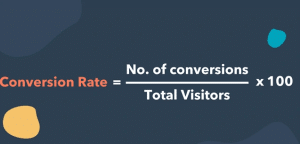In the contemporary landscape, the predominant objective for marketing teams revolves around channeling traffic to websites with the anticipation that this influx of visitors will subsequently transform into qualified leads, paving the way for sales representatives to finalize deals.
However, this represents only one facet of the challenge. Unleashing the full potential of existing traffic and leads, rather than exclusively fixating on attracting new visitors, holds the key to fostering enduring and sustainable growth for companies. This is precisely where the significance of Conversion Rate Optimization (CRO) becomes apparent.
This guide is designed to elucidate the potency of CRO, underscore why businesses should prioritize enhancing their conversion rates, and provide a comprehensive roadmap for initiating the journey toward optimization.
What is conversion rate optimization?
Conversion Rate Optimization, commonly called CRO, entails the systematic approach of elevating the proportion of individuals or visitors to a website who undertake a designated action, thereby amplifying the number of leads generated.
The attainment of CRO involves refining content, conducting split tests, and optimizing workflows. The outcomes of conversion rate optimization manifest in the form of well-qualified leads, heightened revenue, and reduced acquisition costs.
What is a conversion rate?
A conversion rate refers to the proportion of visitors who carry out a specific desired action on a website, such as submitting a web form, enrolling in a service, or making a purchase. A heightened conversion rate implies your website is thoughtfully designed, effectively formatted, and resonates with your intended audience. Conversely, a diminished conversion rate may stem from various factors, encompassing issues with website performance or design. Examples include sluggish loading times, malfunctioning forms, or copy that fails to communicate the value of the offer, all of which contribute to a suboptimal conversion rate.
What is a good conversion rate?
Determining a “good” conversion rate is contingent upon various factors, including your industry, niche, objectives, traffic source, and the demographics of your audience. In the second quarter of 2022, e-commerce websites in the United States witnessed a conversion rate of 2.3%, whereas online shopper conversion rates in Great Britain surpassed 4%. Should your current conversion rate fall below your desired benchmark—whether it lags behind the industry average, trails competitors, or falls short of internal targets—it signals the need for optimization. Conversions can occur across diverse sections of your website, spanning the homepage, pricing page, blog, landing pages, and more. To unlock the full potential of converting website visitors into paying customers, comprehensive optimization across each of these areas is essential.
How to Calculate Conversion Rate
To compute the conversion rate, you can employ the following formula: divide the number of conversions by the total number of visitors and then multiply the result by 100 to yield a percentage.
CRO AND SEO
SEO, or search engine optimization, revolves around enhancing the visibility of your website on search engine results pages (SERPs) to augment organic traffic and sales. On the other hand, CRO, as previously highlighted, is dedicated to enhancing website performance to convert visitors into customers and elevate overall conversion rates. While both CRO and SEO share the common objective of increasing sales, they pursue this goal through distinct approaches. Ultimately, positioning your brand for success involves optimizing your website for increased visibility on prominent search platforms and enhancing its functionality to actively encourage conversions.
Identifying key areas for the implementation of a CRO strategy on your website is crucial.
Below are four sections where conversion rate optimization can significantly enhance performance:
- Homepage: The homepage is a primary focus for CRO initiatives. Beyond creating a positive initial impression, it serves as an opportunity to engage and guide visitors deeper into the website. Strategies may include featuring prominent links to product information, incorporating a free signup button, or integrating a chatbot to address visitor questions throughout their browsing journey.
- Pricing Page: The pricing page holds substantial influence over the decision-making process for many website visitors. CRO interventions can transform this page into a conversion hotspot by adjusting pricing structures (e.g., annual versus monthly costs), detailing product features corresponding to each price point, providing a contact number for price inquiries, or introducing a straightforward pop-up form. A notable example is Hotjar, which experienced a substantial boost in leads by incorporating a straightforward email opt-in popup form on its pricing page.
These strategic CRO implementations aim to optimize user experience and drive conversions, ultimately contributing to the overall success of your website.
- Blog: Leveraging a blog presents a significant opportunity for conversion on a website. Beyond disseminating insightful and valuable content related to your industry, a blog can strategically employ CRO to transform readers into leads. This involves incorporating calls-to-action (CTA) within articles, prompting readers to delve deeper into a topic by providing their email address in exchange for an ebook or industry report.
- Landing Pages: Given that landing pages are purposefully crafted to elicit specific actions, it’s logical that they boast the highest average conversion rate among signup forms at 23%. For instance, an event landing page can undergo optimization by featuring a video from the previous year’s event to motivate visitors to register for the current year. Similarly, a landing page offering a free resource can be enhanced with preview content from that resource to entice visitors to download it.
Understanding the strategic points for conversion optimization is essential. As you contemplate initiating the process, you might be curious about when your business is poised to embark on this transformative journey.
Conversion Rate Optimization Strategies
Explore these effective conversion rate optimization (CRO) marketing strategies that you can experiment with and implement within your organization:
- Text-Based CTAs in Blog Posts: While it’s common practice to include calls-to-action (CTAs) in blog posts, traditional banner-style CTAs may sometimes fall short in capturing visitors’ attention and prompting the desired actions. This challenge is often attributed to banner blindness, where individuals habitually overlook banner-like information on websites. Additionally, as site visitors may not read an entire blog post thoroughly but rather engage in content “snacking,” a different approach is warranted.Enter the text-based CTA — a concise line of text hyperlinked to a landing page and formatted as an H3 or H4. Spot conducted a test with text-based CTAs in comparison to regular end-of-post banner CTAs on 10 blog posts. The results showed that the conventional banner CTAs contributed merely 6% of the leads generated by the blog posts, whereas the anchor-text CTAs alone accounted for up to 93% of a post’s leads.
Experimenting with innovative approaches like text-based CTAs can significantly impact lead generation and enhance the effectiveness of your CRO efforts.
- Incorporate Lead Flows on Your Blog: A valuable addition to your conversion rate optimization toolkit is the implementation of lead flows on your website. Lead flows are high-converting pop-ups strategically designed to capture attention and provide value. Depending on your offer, you can choose from options like a slide-in box, a drop-down banner, or a pop-up box. HubSpot’s experimentation with a slide-in box on their blog in 2016 yielded impressive results, boasting a 192% higher clickthrough rate and 27% more submissions compared to a regular end-of-post CTA.
- Conduct Tests on Your Landing Pages: Landing pages play a pivotal role in modern marketing and are integral to conversion rate optimization. As the juncture where a website visitor transforms into a lead or an existing lead engages more deeply with your brand, optimizing landing pages is essential. A/B testing allows you to quickly assess various versions of website copy, content offers, images, form questions, and web pages to discern the preferences of your target audience. By leveraging A/B testing, China Expat Health achieved a remarkable 79% increase in lead conversion rates, demonstrating the impact of strategic changes, such as refining headlines and incorporating customer testimonials.
- Facilitate Lead-to-MQL Conversion: Recognizing that some visitors prefer expediting the buyer’s journey and directly engaging with a sales representative, it’s crucial to guide these high-intent visitors toward becoming marketing-qualified leads (MQLs). This involves optimizing web pages, employing clear and compelling copy, and utilizing smart CTAs. HubSpot, for instance, observed higher conversion rates for visitors signing up for product demos compared to those opting for free product trials. Tailoring the website and conversion paths to encourage demo bookings or meetings with sales reps proved to be a successful strategy. The key lies in conducting tests to identify the most effective customer-generating processes and then streamlining accordingly to minimize friction in the sales process.
- Establish Workflows to Empower Your Team: Leverage marketing automation software to create automated workflows that empower your team. Marketing automation enables the seamless sending of automatic emails through workflows, allowing leads to schedule meetings with representatives in a single click. Additionally, reps receive timely notifications when leads take high-intent actions, such as viewing the pricing page. In the realm of e-commerce, you can implement email reminders to individuals who abandon their shopping carts, enhancing the chances of conversion.
- Incorporate Messaging on High-Converting Web Pages: Enhance user engagement and support by integrating live chat software on your website, enabling real-time communication with visitors. To boost conversions, strategically implement messaging features on high-performing web pages, such as pricing and product pages. This ensures that leads receive immediate information and assistance. Make these messaging and chatbot interactions action-based; for instance, automatically offering assistance and answering questions if a visitor has spent more than a minute on a page. Utilizing a live chat tool, like HubSpot, simplifies the implementation of these features.
- Optimize High-Performing Blog Posts: Leverage the potential of blog articles by optimizing them for increased conversions, especially if you already have existing content on your site. Identify posts with substantial web traffic but low conversion rates, addressing potential issues related to SEO, content offers, or calls-to-action (CTA). A strategic example involves adding an inbound press release template offer to a blog post discussing press releases, resulting in a remarkable 240% increase in conversions for that post. Simultaneously, focus on blog posts with high conversion rates by driving more qualified traffic through content optimization for the search engine results page (SERP) or updating the content to ensure its currency and relevance.
- Utilize Retargeting for Visitor Re-engagement: Irrespective of your primary conversion metric, the reality remains that a significant portion of your website visitors may not take the desired action. Employing retargeting on platforms like Facebook provides an effective strategy to re-engage individuals who navigate away from your site. Retargeting functions by tracking website visitors and presenting them with online ads as they browse other sites on the internet. This approach is particularly potent when retargeting those who visited your highest-converting web pages. Fundamental inbound marketing principles remain crucial in retargeting efforts, emphasizing the importance of well-crafted copy, engaging visuals, and a compelling offer to ensure the effectiveness of your retargeting campaigns.
In conclusion, embarking on a journey of Conversion Rate Optimization (CRO) is essential for maximizing website performance. The eight strategies outlined provide a comprehensive starting point, emphasizing the significance of text-based CTAs, lead flows, landing page optimization, and messaging integration. Leveraging A/B testing, optimizing blog posts, and implementing retargeting further enhance the potential for increased conversions. A successful CRO journey involves strategic adaptation to user behavior, ensuring a seamless transition from visitor to lead and, ultimately, a satisfied customer. By continually refining and aligning with audience preferences, businesses can unlock sustained growth and heightened revenue through effective conversion optimization.




